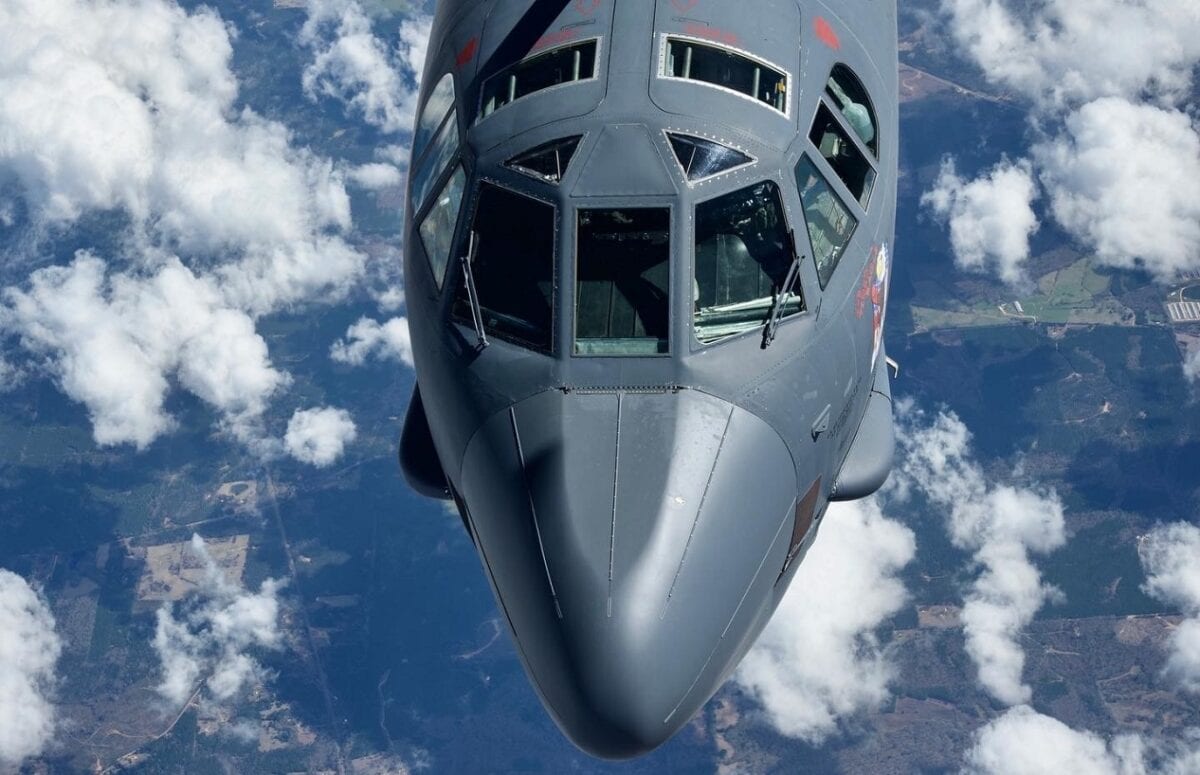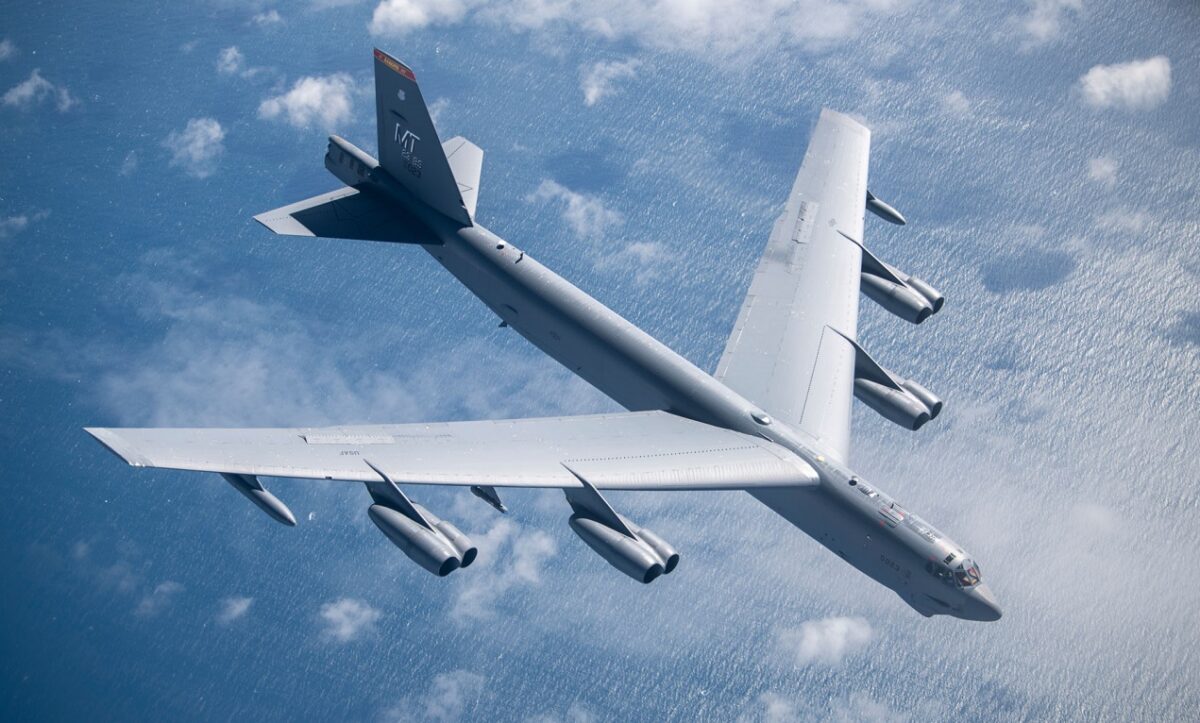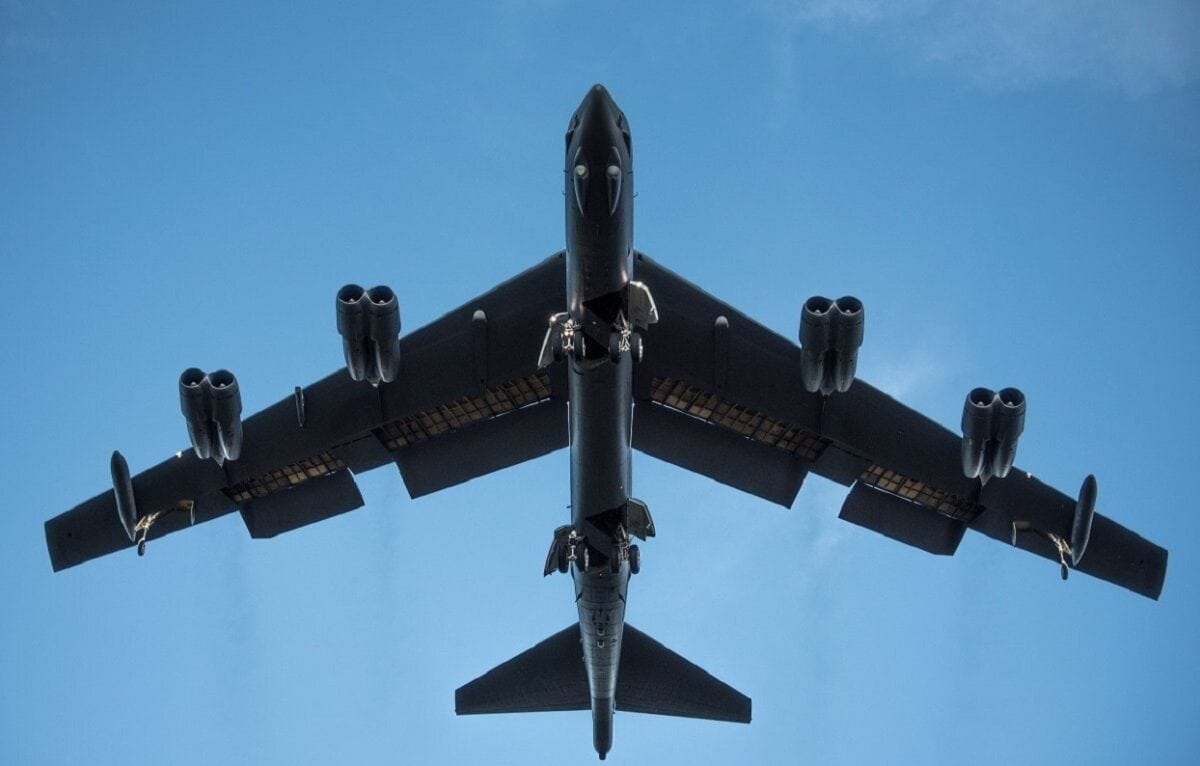Like the Beach Boys song goes, the B-52 Stratofortress heavy bomber, aka the “BUFF” (Big Ugly Fat…Fellow, at least in polite company), is “Still Cruisin’ After All These Years.” At the ripe old age of 70, the design is way older than the crews flying it. This long-lived bomber is part of a small pantheon of U.S. combat aircraft that have been in service for over 50 years; the other “brothers” (so to speak) in this exclusive fraternity are the P-3, KC-135, the C-130, and the U-2.
Flexible and Versatile
So, why has the B-52 lasted for so long? Simply put: because it still works, and so damn well to boot! From “The Bomb,” i.e. nuclear weapons, to conventional unguided “dumb bombs” to cruise missiles to Joint Direct Attack Munitions (JDAMs) to Joint Standoff Weapons (JSOWs), the Stratofortress has “Been There, Done That, Got The (Proverbial) T-Shirt.” As we Air Force types are fond of saying, “Flexibility is the key to airpower,” and time and time again, this behemoth of a warbird has demonstrated her flexibility and versatility.
Birth of a Heavyweight
As implied in the opening paragraph, the B-52 indeed made her maiden flight 70 years ago – on April 15, 1952, to be precise. The bomber officially entered into service in February 1955, replacing the Convair B-36 Peacemaker as the U.S. Air Force’s mainstay heavy bomber. Since then, a total of 744 were built from 1952 to 1962, with only the B-52H variant still remaining in service. Fifty-eight are operated by active-duty USAF units including the 2nd Bomb Wing at Barksdale AFB, Louisiana, and the 5th Bomb Wing at Minot AFB, North Dakota. There are 18 with the 307th Bomb Wing, a Reserve component, and 12 in long-term storage.
Not Just a Bomber, But a PSYOP Weapon
So much has been written about the BUFF’s wartime history, that I couldn’t possibly do it justice here, so for the sake of brevity, I’ll try to narrow it down to what I consider the beautiful BUFFs (oxymoron intended) most impressive accomplishments.
Recounting the experience of getting caught in the middle of one of the B-52s’ Arc Light missions over the Ho Chi Minh Trail, former Viet Cong Minister of Justice Truong Nhu Tang described it in his memoirs as follows: “It seemed, as I strained to press myself into the bunker floor, that I had been caught in the Apocalypse … the terror was complete. One lost control of bodily functions as the mind screamed incomprehensible orders to get out.”
There was Operation Linebacker II, the so-called “Christmas Bombing” of Hanoi in 1972. American POWs holed up at the infamous “Hanoi Hilton,” such as the late Medal of Honor recipient Vice Admiral James Bond Stockdale, recounted how the BUFFs’ bombs blasted the arrogance out of their North Vietnamese captors’ previously inflated egos: “One look at any Vietnamese officer’s face told the whole story. It telegraphed hopelessness, accommodation, remorse, fear. The shock was there; our enemy’s will was broken.” Sure enough, the North Vietnamese came back to the peace negotiation table shortly thereafter.
Fast-forward to Operation Desert Storm, wherein the B-52s were called upon to wage carpet-bombing raids against Saddam Hussein’s elite Republican Guards. After hostilities concluded, many Iraqi POWs suggested that the B-52s had the biggest negative impact on their morale. One particular Iraqi officer said he surrendered because of B-52 strikes. Upon being informed by his interrogator that his unit was never hit by B-52s, he replied “But I saw one that had been attacked.”
Simply put, even though the B-52 wasn’t specifically designed as a PSYOP weapon, its awe-inspiring destructive power repeatedly had that de facto bonus effect.
Heavy Bomber … and MiG-Killer
As if those accomplishments weren’t impressive enough, the B-52 even briefly managed to play the part of a MiG killer. During the aforementioned Linebacker II operation, two B-52 tail gunners, Staff Sergeant Samuel O. Turner and Airman 1st Class Albert Moore, using the quad-mounted .50 caliber machine guns, managed to shoot down MiG-21 Fishbeds that had been hellbent on downing the bombers. These victories make the B-52 the largest aircraft credited with air-to-air kills, and presumably the last heavy bomber ever to pull off such a feat.
A Personal Aside
The B-52 happens to be my all-time favorite bird. I firmly believe that nothing says “Don’t mess with the good ol’ U.S. of A” quite like a B-52 carpet bombing raid does. Had the Air Force not deemed me ineligible for Pilot or Navigator training due to my depth perception deficiency – thus relegating me to ground-pounding, beret-wearing Security Forces (HOOAH!) duty instead – the BUFF would’ve been my platform of choice.
Alas, I shall instead have to live vicariously through a personal friend who was blessed enough to fly this venerable super bomber, USAF Lt. Col. (Ret.) Bill Dettmer, who’s also one of my fellow USC Trojans alumni. Bill flew the B-52 with Strategic Air Command (SAC) for 14 years and was kind enough to share part of his story with me for the purposes of this article:
“We got to within two miles, and I got a better look at what was raising the dust. It wasn’t a vehicle—it was a herd of about 40 wild mustang horses. They were galloping across our projected track from right to left … I announced to the crew on the interphone that we had wild mustangs outside. The four crewmembers in the back, who had no windows, wanted a look at them … While we were turning around the horses, I noticed something unusual. They, too, were turning left in a desperate attempt to get away from us. As we kept turning, they kept turning, until eventually we completed our 360-degree turn and continued on our original course. By this time, they, too, had completed a 360-degree turn and continued in their original direction. It wasn’t until later in the flight that it occurred to me that we had done! ‘Giddyup! Yee-hah!’”

A U.S. Air Force KC-135 Stratotanker with the 927th Air Refueling Wing, Florida refuels a B-52 Stratofortress with the Barksdale Air Force Base, Louisiana, on February 26, 2021. On this mission there were two Stratotankers that refueled three Stratofortresses. (U.S. Air Force photo by Tiffany A. Emery)


While fighter pilots like Top Gun‘s fictitious Maverick typically have more of a “cowboy” image in the eyes of the general public, stories like Bill’s show that bomber pilots can play the Wild West game as well. As the bomber pilots’ mantra goes: “Fighter pukes make movies. Bomber pilots make history!” And the B-52 continues to make history to this very day, with plenty more still to come.





